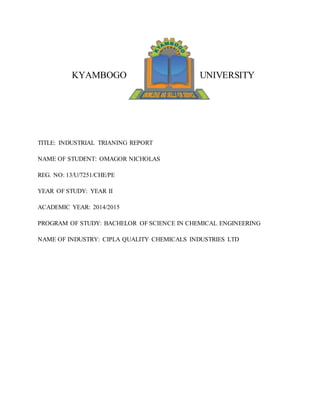This document is an industrial training report submitted by Omagor Nicholas, a second year chemical engineering student at Kyambogo University. The report details his 8-week industrial training at Cipla Quality Chemical Industries Limited (CiplaQCIL), a pharmaceutical manufacturing plant in Kampala. The report includes sections on quality assurance, stores management, quality control, production processes, and engineering systems at the plant. It also discusses the objectives and methodology of the training, as well as lessons learned and recommendations.































































